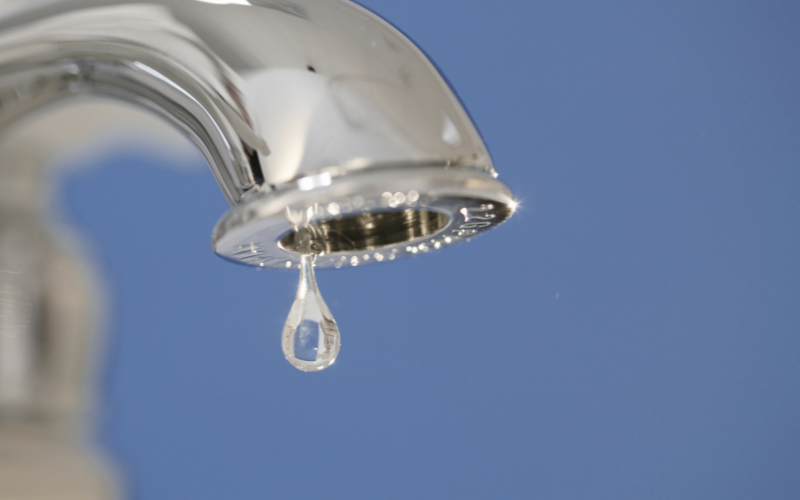
As winter approaches in Northern Colorado, it’s essential to prepare your home for the cold temperatures and potential snowstorms that come with the season. One of the most common issues homeowners face during this time is frozen and burst pipes, which can lead to costly water damage and repairs. Fortunately, there are several simple, effective steps you can take to protect your pipes and keep your home safe from winter-related water emergencies.
In this blog post, we’ll walk you through essential preventative measures to keep your pipes in good condition, ensuring your home stays dry, safe, and comfortable throughout the winter months.
Why Do Pipes Freeze in Cold Weather?
When the temperature drops, the water inside your pipes can freeze. As water freezes, it expands, putting immense pressure on the pipe. This pressure can cause the pipe to crack or burst, leading to significant water damage and the need for expensive repairs. In Northern Colorado, where temperatures can drop below freezing for extended periods, it’s crucial to take extra precautions to prevent this issue from happening.
Preventative Measures to Keep Your Pipes Safe
Here are some effective steps you can take to protect your pipes from freezing and bursting during dangerously low temperatures:
1. Insulate Exposed Pipes
One of the most effective ways to prevent your pipes from freezing is by insulating them. Pipes located in unheated areas such as basements, crawl spaces, and attics are particularly vulnerable to freezing. Use pipe insulation materials like foam sleeves, heat tape, or even old towels to cover exposed pipes. Insulating your pipes helps to maintain a consistent temperature around them and reduces the chances of freezing.
2. Let Faucets Drip
Allowing your faucets to drip slowly can help keep the water moving in the pipes, which reduces the likelihood of freezing. Focus on faucets connected to exposed pipes, as they are more prone to freezing. Even a small drip can make a big difference in preventing a pipe from freezing solid.
3. Open Cabinet Doors
In areas where pipes are located under sinks, such as kitchens or bathrooms, open the cabinet doors to allow warm air to circulate around the pipes. This simple step can help prevent freezing by ensuring that the pipes receive some warmth from your home’s indoor air, especially if the sink is located against an exterior wall.
4. Maintain a Consistent Temperature
During the winter months, it’s important to keep your thermostat set to at least 55°F, even when you’re away. Fluctuations in temperature can increase the chances of freezing pipes, particularly in the colder months. Maintaining a consistent indoor temperature ensures that your pipes stay warm enough to avoid freezing.
5. Seal Drafts
Drafts around windows, doors, and pipes can allow cold air to seep in and lower the temperature around your pipes. Check for any gaps or cracks around these areas and seal them with weatherstripping or caulk. Sealing drafts helps keep your home warm and ensures your pipes are protected from the cold.
6. Add Extra Heat to Vulnerable Areas
Certain areas of your home, such as basements, attics, or garages, are more vulnerable to temperature drops. Consider using a space heater safely in these areas to provide additional warmth. Ensure that the heater is positioned safely away from flammable materials, and never leave it unattended. Extra heat can be a game-changer in preventing frozen pipes.
7. Disconnect Hoses
Before winter sets in, be sure to disconnect any garden hoses from outdoor spigots. After disconnecting the hose, insulate the spigot with foam covers or old towels to prevent the water inside from freezing. Frozen outdoor pipes are a common cause of burst pipes, so taking this extra step can prevent costly damage.
8. Shut Off Outside Water
If your home has a shut-off valve for the outdoor water supply, turn it off for the winter season. Drain any remaining water from outdoor pipes to prevent freezing. By shutting off outside water, you eliminate one of the most common causes of burst pipes, keeping your property safe from unnecessary damage.
Why Preventing Frozen Pipes Is Essential
Taking these preventative steps can help you avoid the headache and expense of dealing with burst pipes. Frozen pipes can cause extensive water damage to your home, including damage to floors, walls, ceilings, and personal belongings. By proactively insulating pipes, maintaining a consistent temperature, and using other protective measures, you can reduce the risk of frozen pipes and ensure that your home remains safe and functional throughout the winter.
Code 3 Water Remediation: Your Partner in Water Damage Prevention
While these preventative measures can go a long way in protecting your pipes, accidents can still happen. If you find yourself dealing with a water emergency due to frozen or burst pipes, don’t hesitate to reach out to the experts at Code 3 Water Remediation. We specialize in water damage restoration, mold remediation, and other preventative services, including leak protection and diagnosis.
Learn more about our comprehensive Preventative Services that help protect your home from potential water damage throughout the year.
Our team is here to help you minimize the risk of water damage and provide professional solutions to protect your home. Whether you’re looking for advice on maintaining your plumbing or need immediate assistance with water damage, we are here to help.
